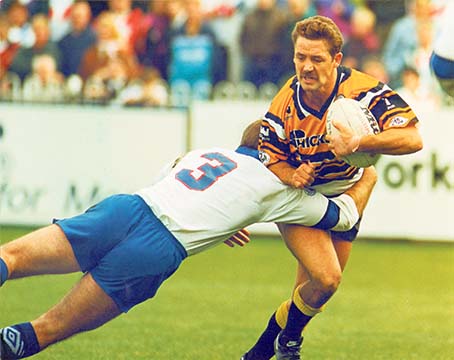 One of the Melbourne Lions
Graham Steadman made a name for himself as a brilliant young stand-off with York and Featherstone in the mid- to late-eighties.
A world-record fee of £170,000 took him to Castleford, where he was switched to fullback.
Despite competition from Joe Lydon, Gary Connolly, Steve Hampson and Alan Tait, Steadman was first
One of the Melbourne Lions
Graham Steadman made a name for himself as a brilliant young stand-off with York and Featherstone in the mid- to late-eighties.
A world-record fee of £170,000 took him to Castleford, where he was switched to fullback.
Despite competition from Joe Lydon, Gary Connolly, Steve Hampson and Alan Tait, Steadman was first Rugby League Heroes: Graham Steadman
 One of the Melbourne Lions
Graham Steadman made a name for himself as a brilliant young stand-off with York and Featherstone in the mid- to late-eighties.
A world-record fee of £170,000 took him to Castleford, where he was switched to fullback.
Despite competition from Joe Lydon, Gary Connolly, Steve Hampson and Alan Tait, Steadman was first
One of the Melbourne Lions
Graham Steadman made a name for himself as a brilliant young stand-off with York and Featherstone in the mid- to late-eighties.
A world-record fee of £170,000 took him to Castleford, where he was switched to fullback.
Despite competition from Joe Lydon, Gary Connolly, Steve Hampson and Alan Tait, Steadman was first 